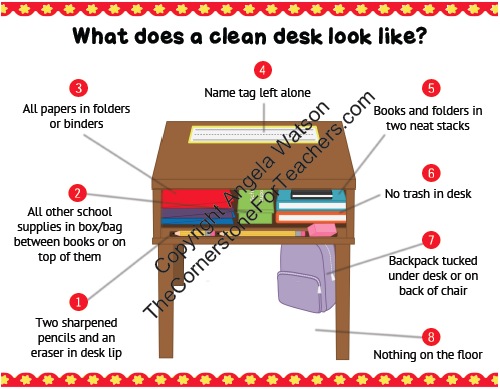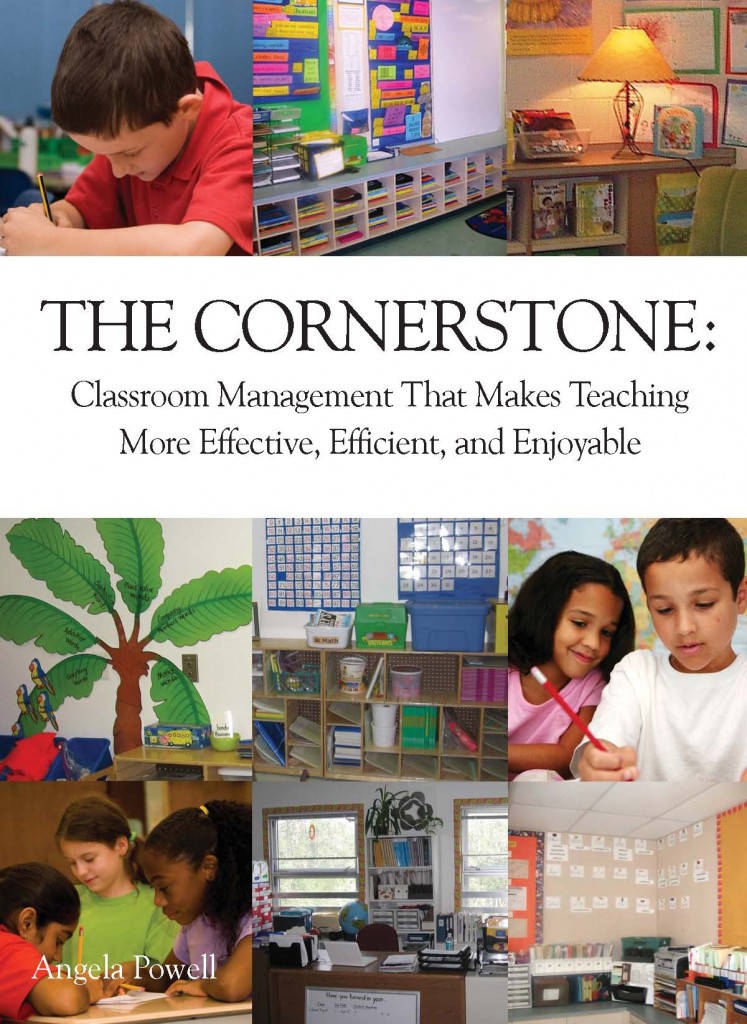
School doesn’t start back until after Labor Day for us here in New York (sorry to make you jealous!), but of course I’ve already started planning ahead. I’ve teamed up with a fantastic group of teacher bloggers to share ideas for making the start of the school year easier.
One major challenge during the first week of school is organizing all the supplies that kids bring in and teaching them how to store everything away appropriately. I used to ask my third graders to put the communal supplies (like Kleenex and printer paper) in a designated spot on a table, and then put all of their personal school supplies away “neatly” in their desks. I’d get distracted by all the other first day of school tasks and find myself peeking in the kids’ desks a week later to find bits of crayon wrapper, balled up pieces of paper, and mountains of broken pencils piled on top of crooked stacks of books.
“Does this look clean to you?” I’d ask. The kids would stare at me blankly, move some things around, and then show me a desk three seconds later that looked only marginally better. And that’s when I realized that MY expectations for a clean desk were completely different than the KIDS’ expectations. And it was time I figured out a way to get us on the same page. I drew this clean desk diagram and hung it up at the front of the room:

I then introduced my expectations in a mini lesson which taught students how to use the diagram to clean their desks and check to see if their desks were clean. I encouraged them to figure out the reason why each aspect of the diagram was included and how it would help them to find and care for their materials more easily.
After the introductory mini lesson, I’d conduct periodic desk checks. These weren’t done in a crazy drill sergeant way–they were actually fun for the kids because I’d made cleaning up into a game, and the kids were anxious to see if their desks would match up to the diagram and pass inspection. We had a lot of fun with it! The first desk check I did was usually later the same day that I taught the mini lesson so students’ desks were still fairly neat and it wouldn’t take long. I modeled how to do a desk check by reading each element and checking a student’s desk to see if it matched, narrating my thoughts as I went: “Let’s see…#1…two pencils and an eraser…nope, I only see one pencil, so let me get another out of the supply box. Okay, now #1 matches. #2…all supplies in the pencil box which should be on top of the books or between the stacks, yep, got that…#3…” and so on. Then I gave students about one minute to read each element on the diagram and check their desks in the same way.
The clean desk diagram worked wonders in terms of making sure kids understood exactly what was expected. But of course, the kids didn’t automatically keep their desks clean just because I’d shown them how! They needed reminders and practice opportunities all throughout the year. I usually conducted desk checks once a day at the beginning of the school year and once a week for the rest of the year. The good news is that the “desk checks” became quicker and more efficient as students become familiar with the clean desk criteria and begin to internalize it. As students learned how to care for and organize their belongings, they realized their supplies lasted longer and were easier to find. My hope is that students will continue to see the value in organization and carry those skills all throughout their lives.

(If you’d rather not draw your own Clean Desk Diagram, you can download the one you see above, which I created in conjunction with the fabulous Ashley Hughes of The School Supply Addict. The download includes 8 printable versions of the diagram with different “clean desk criteria” on them, as well as a two page mini lesson that gives you ideas for what to say when introducing the diagram to your students. Click here to get it for $2.)

That’s just one of hundreds of ideas for classroom management that I share in my eBook The Cornerstone: Classroom Management That Makes Teaching More Effective, Efficient, and Enjoyable. The eBook uses photos of my classrooms through the years, forms, and dialogue examples to guidesyou through each step of communicating and reinforcing your expectations for all types of classroom procedures and routines.
The Cornerstone has 500 PAGES of resources in eBook form for only $15! The entire first section of the book provides tips on starting the school year right, including classroom set up and organization, planning for the first few weeks of school, and creating a phenomenal Open House/Back to School Night experience for parents. Check out the Table of Contents to see what else is covered in the book, or learn more about the difference print copy/eBook options available for purchase on my site.
Click here for more back to school tips from other edubloggers:
My Favorite Classroom Management Resources on Pinterest
Follow Angela Watson’s Teaching Ideas’s board Classroom Management on Pinterest.

Angela Watson
Founder and Writer
Sign up to get new Truth for Teachers articles in your inbox
Discussion
Leave a Reply
OR

Join our
community
of educators
If you are a teacher who is interested in contributing to the Truth for Teachers website, please click here for more information.
















Thank you! This is such a great giveaway and blog hop. Love the ideas. 🙂 I especially love the deifnition of diagram below…what a great real world connection!
Thank you! I appreciate the time you took to comment.
Yay!! This is so awesome. I especially love that clean desk diagram. It’s always difficult to get kids to keep their desks clean. :)))
Isn’t it? Hope the diagram is helpful!
Thanks for the awesome tips and sharing of resources.
Any plans for future blog for High school teachers?
Here’s a collection of resources and sale materials from secondary sellers I love: http://sciencestuffbyamy.blogspot.com/2014/08/back-to-school-sale.html
Love the hints from this website.
The Clean Desk Diagram is amazing especially for kids. Its very easy to understand and follow. The illustration makes it easier for them to remember the idea of cleanliness.
Thank you for sharing that, Jose!